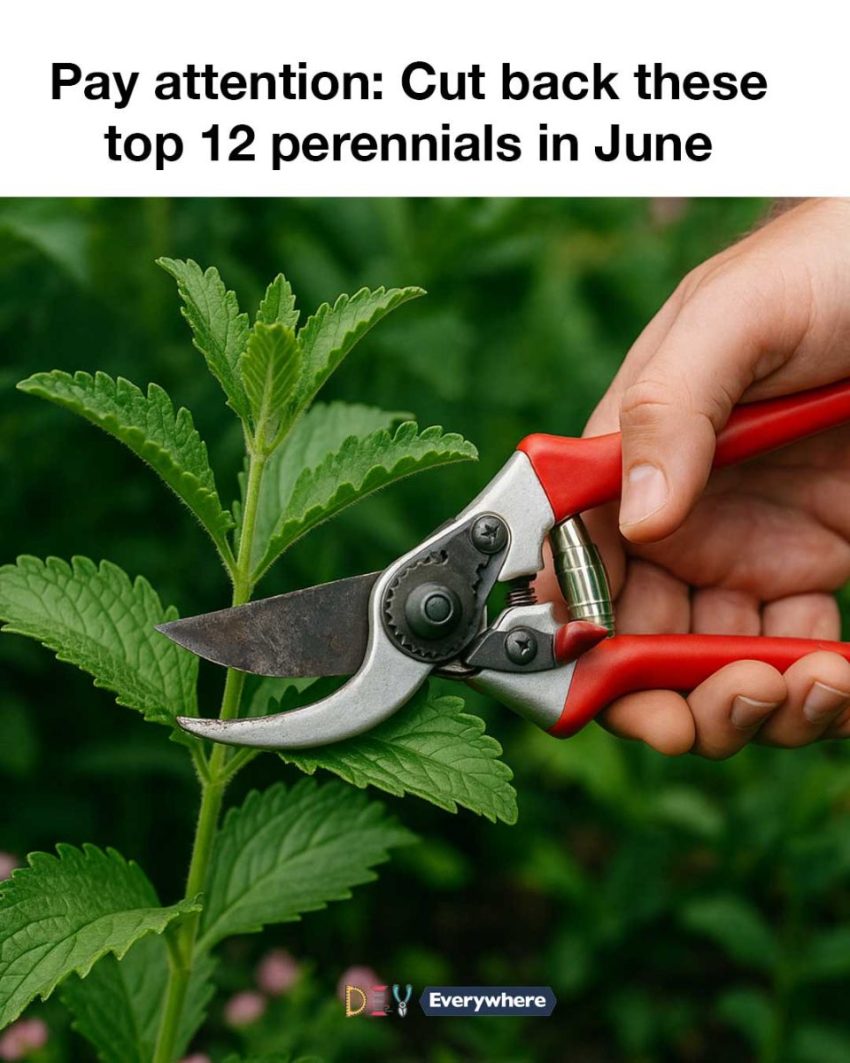ADVERTISEMENT
Why Pruning in June is Beneficial
June is a critical month for the maintenance of perennial plants. After the initial burst of spring growth, plants can become leggy, misshapen, or overly dense, which can hamper their ability to produce new blooms. Cutting back perennials during this period helps stimulate fresh growth and prepare them for the summer heat. Moreover, this practice can prevent diseases by improving air circulation and reducing the risk of pest infestations. By focusing on pruning in June, gardeners can ensure their plants remain healthy and visually appealing.
Top 12 Perennials to Prune in June
1. **Salvia**: Known for its vibrant spikes of color, salvia benefits from a mid-season trim to encourage a second bloom. Cutting back faded flowers will redirect the plant’s energy towards producing new growth.
2. **Catmint (Nepeta)**: This aromatic perennial often experiences a flush of blooms in early summer. Trimming back the spent flowers can promote a more compact form and encourage additional blooming.
3. **Geranium (Cranesbill)**: After the first flowering, cranesbills can become untidy. Cutting them back by about one-third can rejuvenate the plant and lead to a second round of flowers.
4. **Campanula (Bellflower)**: To keep bellflowers blooming, remove spent flowers regularly. This practice encourages the plant to focus its energy on producing new buds.
5. **Veronica (Speedwell)**: Pruning speedwell after the initial flowering can help extend its blooming period. Trim back the flower spikes to the base to promote new shoots.
6. **Delphinium**: These tall, striking perennials may require staking after pruning. Cutting back the flower stalks once they fade encourages a second bloom in late summer.
7. **Poppies**: After the vibrant blooms of poppies fade, cutting back the plant to the basal foliage can tidy up the garden and make way for other plants to shine.
8. **Lady’s Mantle (Alchemilla)**: Trimming off the yellow-green blooms after they start to brown will not only neaten the plant but also prevent self-seeding.
9. **Lupine**: After the first flowering, cut lupines back to the base to encourage healthier foliage and potentially a second bloom.
10. **Bleeding Heart (Dicentra)**: Once the flowers have faded, cutting back bleeding heart helps manage the plant’s size and encourages a more compact growth habit.
11. **Astilbe**: Although astilbes are known for their feathery plumes, cutting back spent flower stems can keep the plant looking tidy and prevent it from over-seeding.
12. **Peonies**: After peonies have finished blooming, removing spent flowers and tidying the plant can prevent disease and encourage robust growth for the following year.
ADVERTISEMENT


